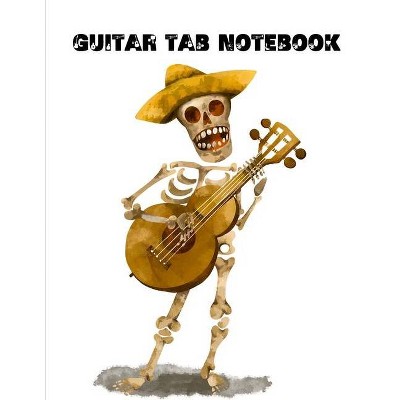New York Noise - (Ethnomusicology Multimedia) by Tamar Barzel (Paperback)

Similar Products
Products of same category from the store
Product info
<p/><br></br><p><b> About the Book </b></p></br></br>Her book describes the way RJC forged a new vision of Jewish identity in the contemporary world, one that sought to restore the bond between past and present, to interrogate the limits of racial and gender categories, and to display the tensions between secularism and observance, traditional values and contemporary concerns.<p/><br></br><p><b> Book Synopsis </b></p></br></br><p>Coined in 1992 by composer/saxophonist John Zorn, Radical Jewish Culture, or RJC, became the banner under which many artists in Zorn's circle performed, produced, and circulated their music. New York's downtown music scene, part of the once-grungy Lower East Side, has long been the site of cultural innovation. It is within this environment that Zorn and his circle sought to combine, as a form of social and cultural critique, the unconventional, uncategorizable nature of downtown music with sounds that were recognizably Jewish. Out of this movement arose bands, like Hasidic New Wave and Hanukkah Bush, whose eclectic styles encompassed neo-klezmer, hardcore and acid rock, neo-Yiddish cabaret, free verse, free jazz, and electronica. Though relatively fleeting in rock history, the RJC moment produced a six-year burst of conversations, writing, and music--including festivals, international concerts, and nearly two hundred new recordings. During a decade of research, Tamar Barzel became a frequent visitor at clubs, post-club hangouts, musicians' dining rooms, coffee shops, and archives. Her book describes the way RJC forged a new vision of Jewish identity in the contemporary world, one that sought to restore the bond between past and present, to interrogate the limits of racial and gender categories, and to display the tensions between secularism and observance, traditional values and contemporary concerns.</p><p/><br></br><p><b> Review Quotes </b></p></br></br><br><p><i>New York Noise</i> will certainly be the standard text for fans and scholars of the RJC moment as well as an important reference for those interested in the downtown scene and contemporary Jewish musical practices.</p></p>-- "Journal of the Society for American Music"<br><br><p><i>New York Noise'</i>s invigorating discussion of the limits, unevenness, and incoherencies of culture offers a seminal contribution to the fields of ethnomusicology, musicology, cultural studies, American studies, and Jewish studies.</p>-- "Project MUSE"<br><br><p>A welcome addition to the literature on contemporary Jewish identity politics.</p>-- "Jewish Book World"<br><br><p>As the first book to tackle RJC in a closely studied manner, Barzel has provided an excellent foundation for future studies, as well as a very high bar by which they will be judged.</p>-- "Musaica Judaica"<br><br><p>Barzel provides plenty of sociohistorical contextualization to root her wider discussion of the role of Jewishly identified music in the downtown scene in New York City in the 1990s. Moreover, her inclusion of audio clips available on the publisher's website provides a soundtrack for critical listening, which is both practical and necessary. The book is expertly detailed in its musicological analysis.</p>-- "H-Judaic"<br><br><p>New York Noise fills an important void in the study of contemporary Jewish music and provides an array of insights into a unique efflorescence of Jewish culture that is sure to stimulate fans and scholars alike.</p>-- "AJS Review"<br><br><p>New York Noise only scratches the surface of potential research in this area, but Barzel adroitly tackles the larger questions of Jewish identity that Radical Jewish Culture wrestles with. Essential for Jewish libraries.</p>-- "AJL Reviews"<br><br><p>Questions of identity and musical originality are broached and compellingly entwined in Barzel's study, which is highly informative and refreshingly free of the dryness or excessive earnestness that can sometimes blight an account of a 'movement' of this kind.</p>-- "Jazzwise"<br><br><p>Recommended.</p>-- "Choice"<br><br><p>The book is detailed, well documented, and a fascinating analysis of a musical milieu that was less visible than the neo-klezmer movement . . . Just as valuable as the text is the availability of supplemental audio and video through a free account at ethnomultimedia.org . . . An outstanding study of a fascinating slice of New York culture.</p>-- "Library Journal"<br><br><p>This book is appropriate for all academic collections and for the well informed and curious lay reader who is prepared for a very heavy read. It might easily serve as a textbook for a course on the subject. This book is highly recommended.</p>-- "AJL Reviews"<br><p/><br></br><p><b> About the Author </b></p></br></br><p>Tamar Barzel is an ethnomusicologist whose research focuses on experimental music, jazz, and improvisation. Drawing on ethnographic and archival sources, her work is positioned at the nexus of cultural studies, creative identity, and musical sound. She has presented papers at scholarly meetings worldwide and has published articles in the <i>Journal of the Society for American Music, Jazz/Not Jazz: The Music and its Boundaries</i>, and <i>People Get Ready: The Future of Jazz</i> <i>is Now.</i> Her newest project investigates the history of creative improvised music in Mexico City.</p>
Price History
Price Archive shows prices from various stores, lets you see history and find the cheapest. There is no actual sale on the website. For all support, inquiry and suggestion messagescommunication@pricearchive.us




















